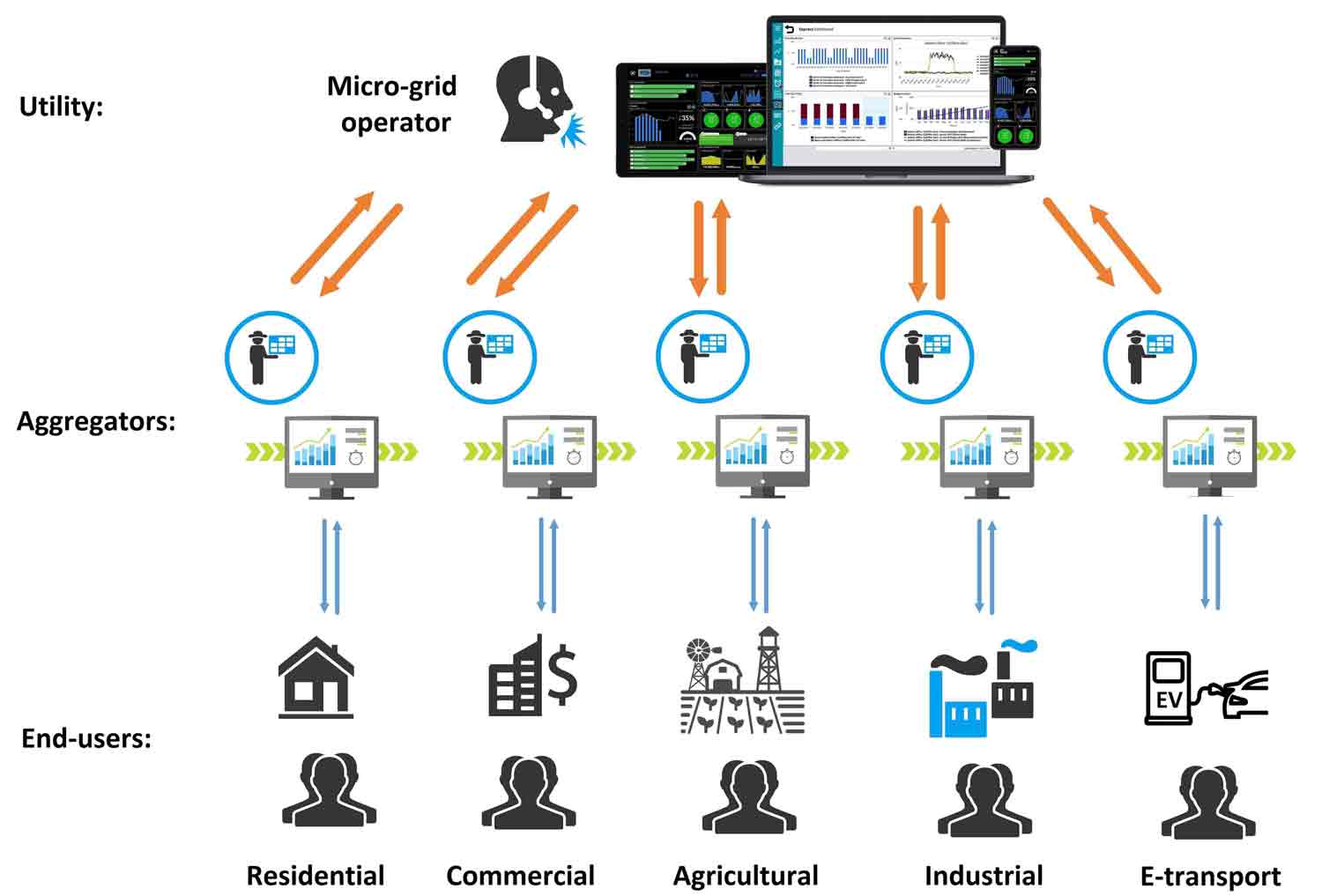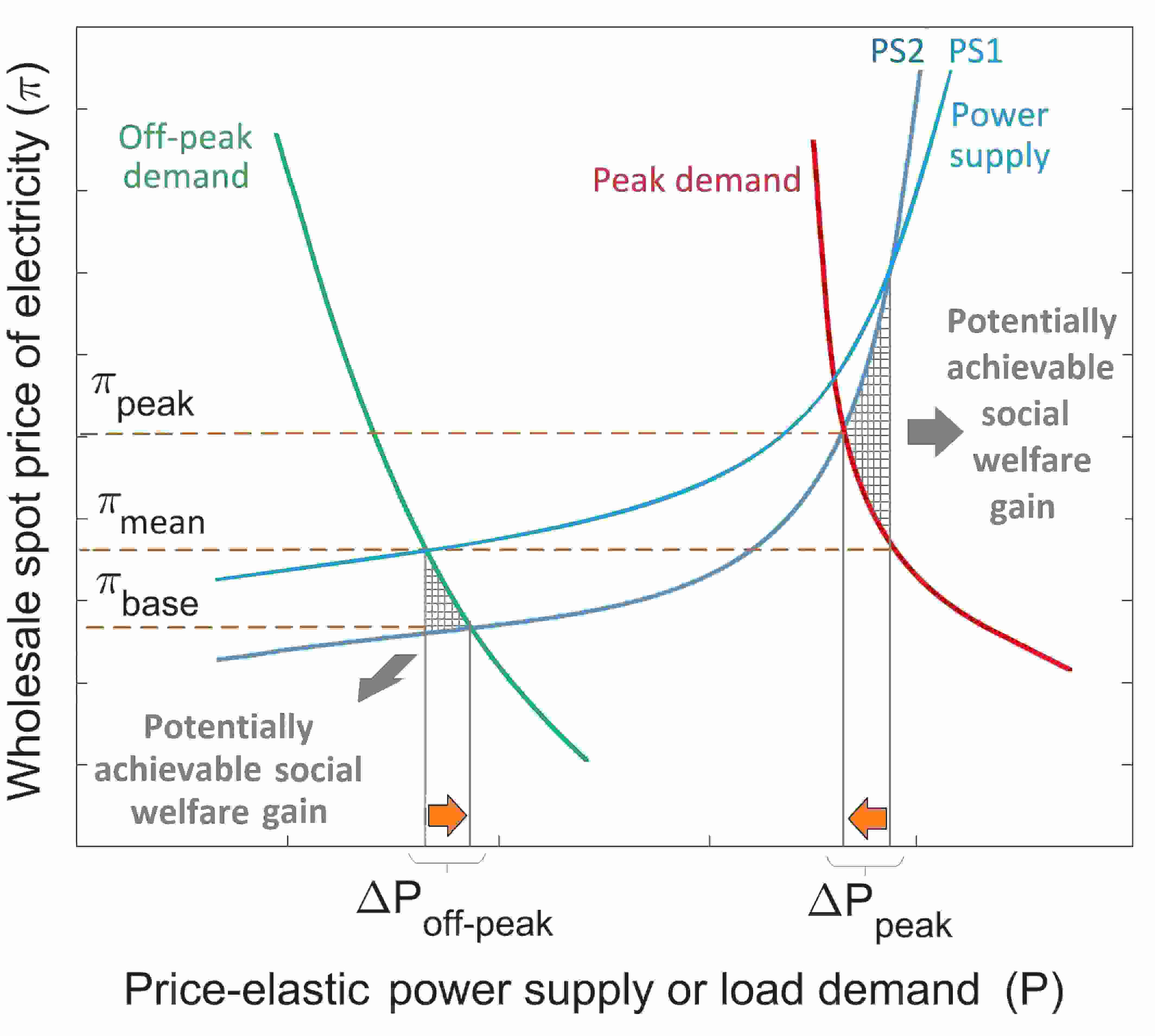Harnessing the Full Potential of Flexible Loads to Improve the Economics of 100%-Renewable Isolated Microgrids
Written by Soheil Mohseni and Alan Brent
Demand response is increasingly recognized as a valuable system resource to cost-effectively manage peak loads. Particularly in off-grid microgrid applications, it can play a pivotal role in reducing the total discounted cost of the project by minimizing the risk of overbuilt equipment capacity, which either remains under-utilized (for storage devices) or necessitates excessive curtailments (for renewable generators) over the project life-cycle. In this light, this article discusses the potential opportunities of implementing integrated demand response programs using relevant state-of-the-art technologies to reduce the need for cost-prohibitive energy infrastructure, with a particular focus on non-grid-connected scenarios.
Introduction
The challenges posed by climate change suggest a dire need for economy-wide deep decarbonization in island communities. The energy transition on islands is additionally driven by high energy prices, excessive reliance on diesel fuel imports, lack of space and resources, and extreme vulnerability to climatic disasters [1], [2]. In this setting, 100%-renewable community-scale energy systems, and particularly microgrids, can lead the way in providing energy reliability, resiliency, and security–and therefore contribute to the sustainable development goals of diesel-dependent islands. However, implementing a renewables-driven microgrid is typically challenged by the underlying capital-intensive assets–and especially energy storage systems.
More specifically, the variability in power outputs of renewable energy resources and power loads results in a substantial supply-demand mismatch in off-grid microgrids, necessitating significant energy storage capacities to be installed. Accordingly, demand-side management is increasingly recognized as an effective tool to capture the flexibility potential of small-to-medium-scale end-users–especially with the increasing penetration of electric vehicles and electric heating–to reduce the need for storage capacities across various timescales of system operation [3]. Whilst smart island energy system initiatives and programs are growing, harnessing the full benefits of flexible loads during the associated planning and decision-making processes has received less collective attention overall.
The Key Role of Demand Response Aggregators
A promising approach for tapping the demand-side flexibility potential of end-consumers is the integrated demand response concept. Integrated demand response is defined as a strategic approach to delivering a portfolio of customer-centric demand-side management schemes to end-users to increase uptake. That is, economies of scale and scope, as well as risk management through portfolio diversification, are the fundamental ways for the associated aggregators to generate value [4].
A key enabler of reaping the full benefits of the flexibility potential of small- to medium-sized customers is increasing the competitiveness of the demand response aggregation [5]. It is widely accepted that competition incentivizes aggregators to design novel approaches that can help improve engagement during peak periods, and therefore more effectively flatten the overall load profile [6]. On the other hand, ensuring an equitable flexible load aggregation scheme with opt-in and opt-out functions requires robust, transparent, and appropriately designed markets for the competition of economically-rational aggregators [7]. Fig. 1 shows the hierarchy of interactions between various classes of end-users, associated third-party demand response intermediaries, and the utility.

Fig. 1. User-aggregator-utility interactions for providing demand response services (adapted from [8]).
The Importance of Load Flexibility in Off-Grid Microgrids
While the coordinated delivery of various demand response programs can unlock significant value in both grid-connected and stand-alone microgrid applications, the benefits are more substantial in 100%-renewable off-grid cases where capital-intensive storage technologies are the only resources to balance out the variability in generation and demand. This is especially important in view of the emerging transport electrification efforts as the resulting highly uncertain and peaky loads necessitate oversizing of renewables and storage devices to guarantee adequate levels of reliability and resiliency.
Accordingly, effective market designs that ensure efficient and equitable allocation of the costs and benefits of demand response between end-users, aggregators, and the utility are increasingly needed to provide robust platforms for well-coordinated electric vehicle charging and discharging strategies and consumption shift of end-use appliances. Such aggregator-activated demand-side flexibility markets are envisioned to be directed by a combination of system-wide net imbalances and customer-tolerance constraints, and, in turn, the utility’s and end-users’ marginal procurement costs [9]. More specifically, a coherent market mechanism for the systematic coordination and dispatching of demand response resources ensures that the eliciting of available flexible loads at each instant of the system operation continues until the marginal value of demand-side flexibility reaches a plateau for further demand response addition – where it is more cost-effective to add one unit of renewable generation and/or storage compared to incentivizing the relevant groups of end-users (usually of the same customer class) to interrupt their loads. Fig. 2 illustrates the potentially achievable social welfare gain using demand response resources.

Fig. 2. Illustration of the role of load flexibility in maximizing the social welfare gain.
Demand Response and Optimal Microgrid Sizing
The optimal system integration of an assortment of components in microgrids entails assigning a specific dimension for each component in the mix in the relevant solution space, thereby often leading to high degrees of computational complexity. The problem is further compounded when considering load flexibility and adding the capability of shifting the timing of electricity demand to the model. This is because the number of permutations that need to be explored during the optimal sizing phase increases exponentially.
To alleviate the computational burden, the consideration of demand-side flexibility whilst optimally sizing a microgrid is often addressed ex-ante. That is, the smoothened-out load profiles that have benefitted from specific load leveling and peak shaving strategies are normally supplied to the associated microgrid sizing modelling frameworks [10]. However, the business-as-usual approach fails to adequately capture the dynamics and complementarities of variable generation and flexible operation of end-use equipment. This has particularly important implications for the globally optimal capacity of capital-intensive energy storage needed in non-grid-connected microgrid applications.
Accordingly, novel long-term strategic microgrid planning approaches that can handle demand-side flexibility endogenously (inside the main optimization model) are urgently needed to provide a better understanding of the optimal trade-offs between demand response resources utilized and energy storage capacities installed. Nature-inspired meta-heuristics [11], which are characterized as higher-level optimization techniques able to deal with inherently complex problems, offer a promising way for supporting the associated battery-supported microgrid techno-economic analyses in the presence of a high share of demand response resources.
Conclusions
Load flexibility can help shift the time of energy use to when it is cheaper, shaping the patterns of demand to better match the availability of renewables, thereby contributing to achieving truly optimal microgrid costs and configurations. In this setting, a more holistic and enhanced vision for integrated, aggregator-enabled demand response is expected to rely on the development of appropriate automation innovations supported by Internet of Things (IoT) networks. Such automated demand response initiatives could additionally take advantage of integrated behavioral interventions to minimize the risk of behavioral anomalies, such as the so-called “free-riding” and “rebound” phenomena [12].
References
- Fu, Q., Hamidi, A., Nasiri, A., Bhavaraju, V., Krstic, S.B. and Theisen, P., 2013. The Role of Energy Storage in a Microgrid Concept: Examining the opportunities and promise of microgrids. IEEE Electrification Magazine, 1(2), pp.21-29.
- O'Neill-Carrillo, E., Mercado, E., Luhring, O., Jordán, I. and Irizarry-Rivera, A., 2019. Community energy projects in the caribbean: Advancing socio-economic development and energy transitions. IEEE Technology and Society Magazine, 38(3), pp.44-55.
- Paterakis, N.G., Erdinç, O. and Catalão, J.P., 2017. An overview of Demand Response: Key-elements and international experience. Renewable and Sustainable Energy Reviews, 69, pp.871-891.
- Huang, W., Zhang, N., Kang, C., Li, M. and Huo, M., 2019. From demand response to integrated demand response: Review and prospect of research and application. Protection and Control of Modern Power Systems, 4(1), pp.1-13.
- Parvania, M., Fotuhi-Firuzabad, M. and Shahidehpour, M., 2013. Optimal demand response aggregation in wholesale electricity markets. IEEE transactions on smart grid, 4(4), pp.1957-1965.
- Burger, S., Chaves-Ávila, J.P., Batlle, C. and Pérez-Arriaga, J.I., 2016. The Value of Aggregators in Electricity Systems. MIT Center for Energy and Environmental Policy Research, CEEPR WP 2016-001.
- Labatut, M., Mandatova, P. and Renaud, C., 2015. Designing fair and equitable market rules for demand response aggregation. EURELECTRIC, Tech. Rep.
- Mohseni, S., Brent, A.C., Kelly, S., Browne, W.N. and Burmester, D., 2021. Modelling utility-aggregator-customer interactions in interruptible load programmes using non-cooperative game theory. International Journal of Electrical Power & Energy Systems, 133, p.107183.
- McPherson, M. and Stoll, B., 2020. Demand response for variable renewable energy integration: A proposed approach and its impacts. Energy, 197, p.117205.
- Mohseni, S., Brent, A.C., Kelly, S. and Browne, W.N., 2022. Demand response-integrated investment and operational planning of renewable and sustainable energy systems considering forecast uncertainties: A systematic review. Renewable and Sustainable Energy Reviews, 158, p.112095.
- Yang, X.S., 2010. Nature-inspired metaheuristic algorithms. Luniver press.
- Batlle López, C. and Rodilla Rodríguez, P., 2009. Electricity demand response tools: current status and outstanding issues.
This article was edited by Jenny Zhou.
To view all articles in this issue, please go to July 2022 eBulletin. For a downloadable copy, please visit the IEEE Smart Grid Resource Center.

Soheil Mohseni is a postdoctoral research fellow in Sustainable Energy Systems at Te Herenga Waka–Victoria University of Wellington in Aotearoa–New Zealand. In his projects, he engages directly with the public- and private-sector energy stakeholders, as well as remote and rural communities across the world, to better understand how energy planning optimization can drive the deployment of stand-alone and grid-connected renewable energy systems. His research interests include the cost-optimal integration of distributed energy resources, electric vehicles, and electrified heating into renewable and sustainable energy systems using artificial intelligence and machine learning algorithms, as well as techno-economic analysis of demand response-integrated multi-energy networks. He is a member of the IEEE Power and Energy Society, the IEEE Working Group on Sustainable Energy Systems for Developing Communities, and Engineering New Zealand. More information on his research can be found on his ORCID profile (https://orcid.org/0000-0001-7367-3757), and LinkedIn profile (https://www.linkedin.com/in/soheil-mohseni).

Alan Brent is a Professor and the inaugural holder of the Chair in Sustainable Energy Systems at Te Wāhanga Ahunui Pūkaha–Wellington Faculty of Engineering, Te Herenga Waka–Victoria University of Wellington in Aotearoa–New Zealand. He holds Bachelor degrees in Engineering (Chemical) and Philosophy (Sustainable Development); Master degrees in Science (Environmental Engineering), Engineering (Technology Management), and Philosophy (Sustainable Development); and a PhD in Engineering Management. He is a chartered member of Engineering New Zealand, a member of the IEEE Power and Energy Society, and an executive committee member of The Sustainability Society, a technical working group of Engineering New Zealand. More information on his research can be found on his ORCID profile (https://orcid.org/0000-0003-3769-4512), and LinkedIn profile (https://www.linkedin.com/in/alanbrent/).
To have the Bulletin delivered monthly to your inbox, join the IEEE Smart Grid Community.
Past Issues
To view archived articles, and issues, which deliver rich insight into the forces shaping the future of the smart grid. Older Bulletins (formerly eNewsletter) can be found here. To download full issues, visit the publications section of the IEEE Smart Grid Resource Center.




